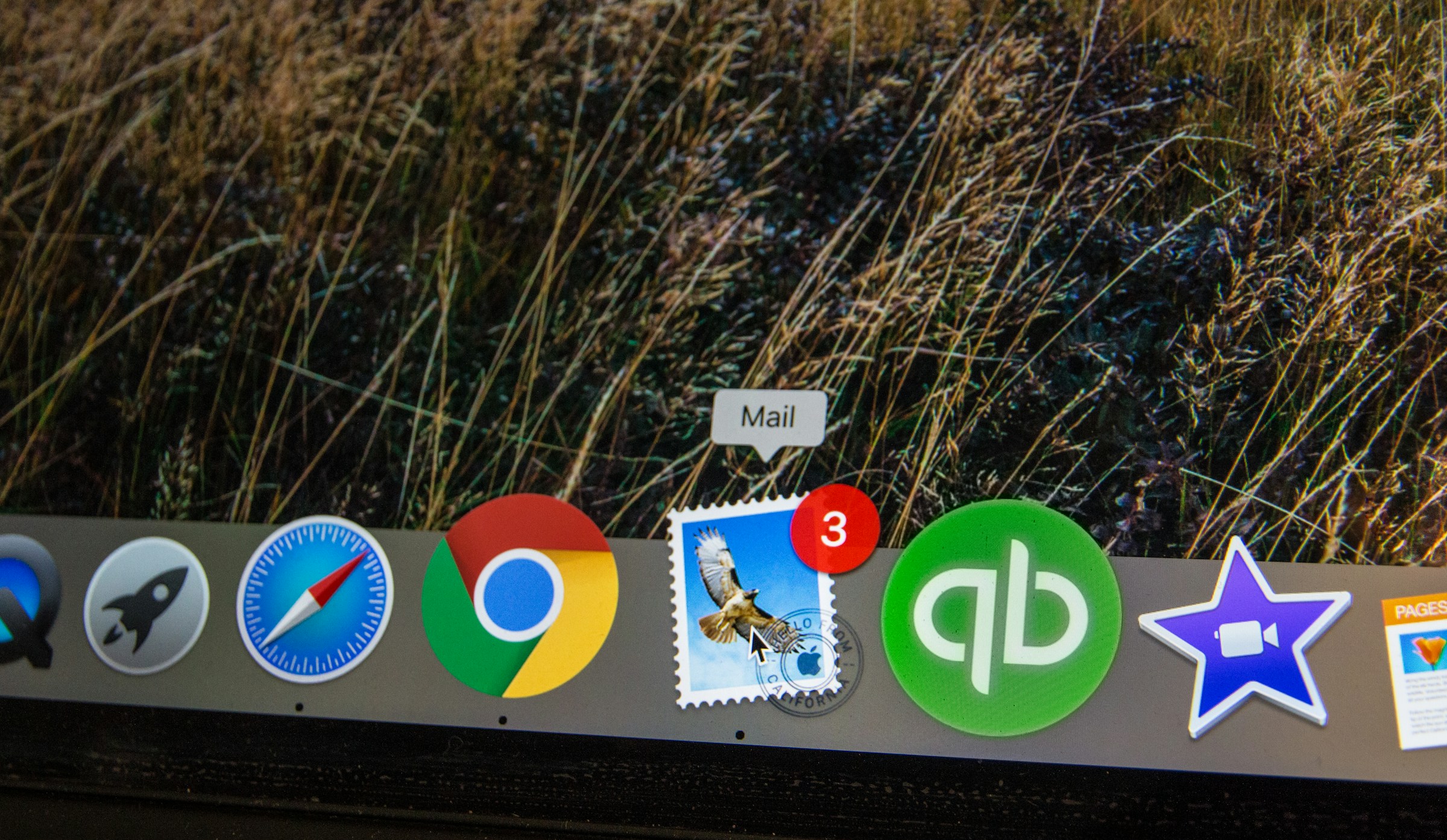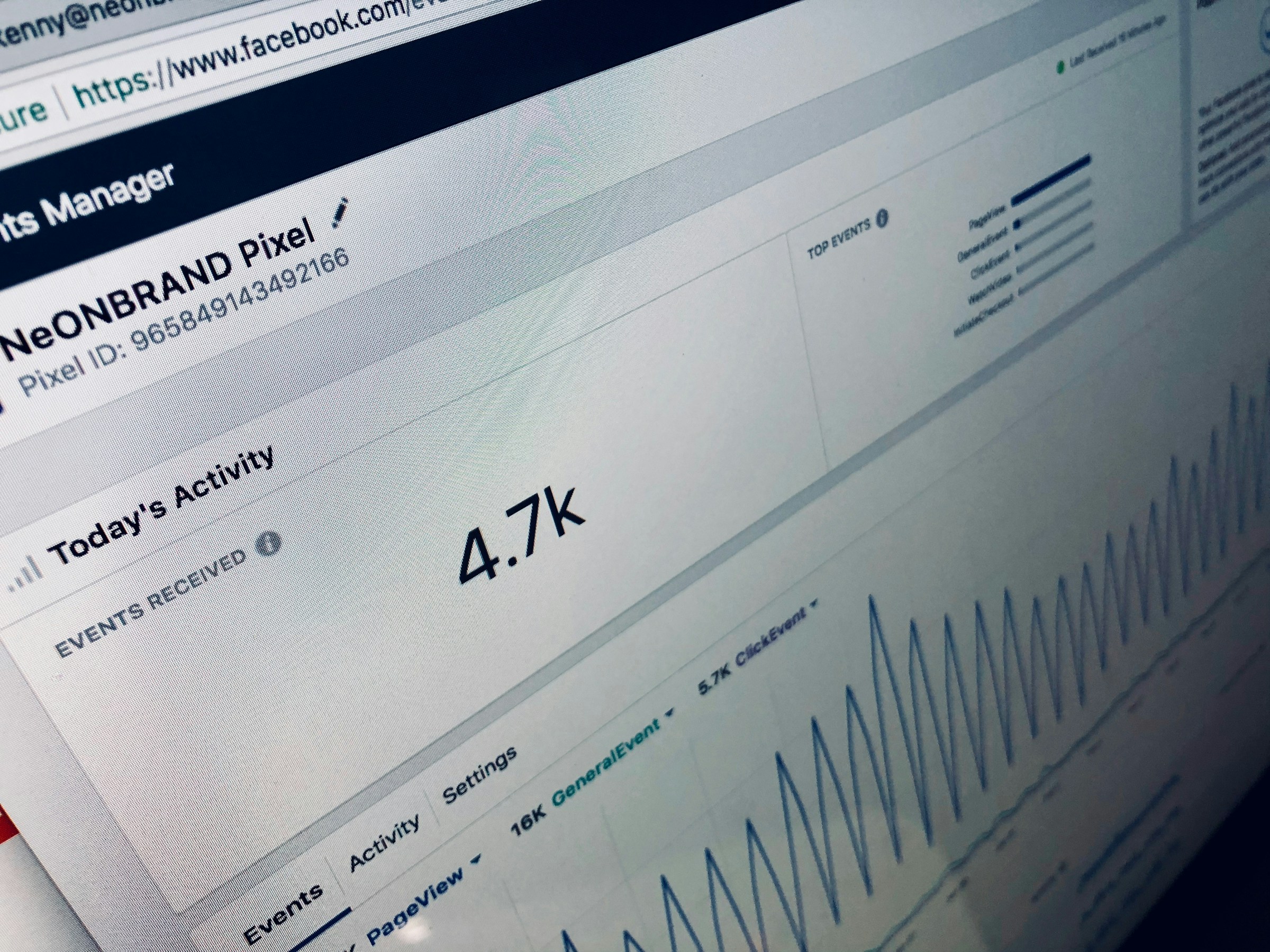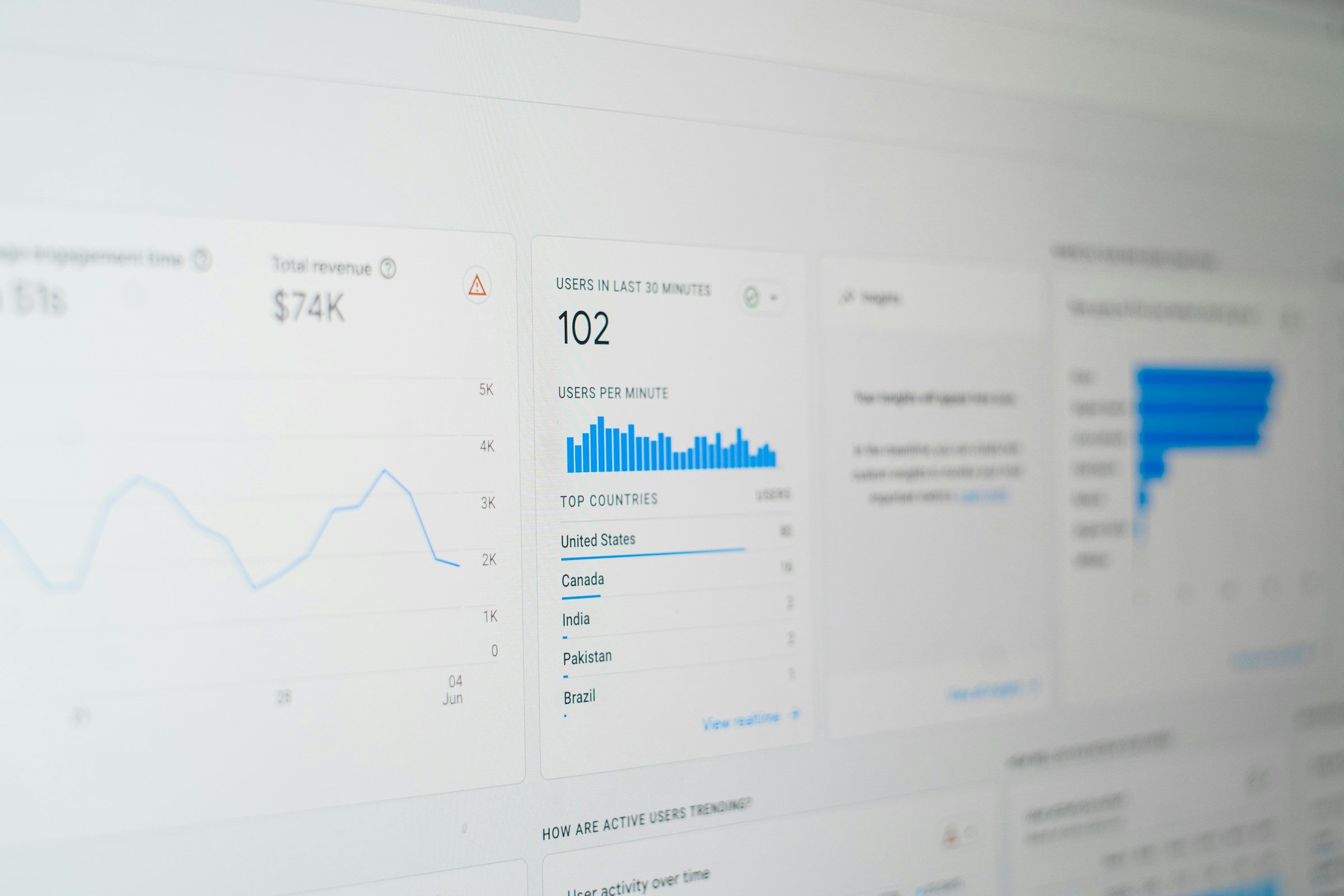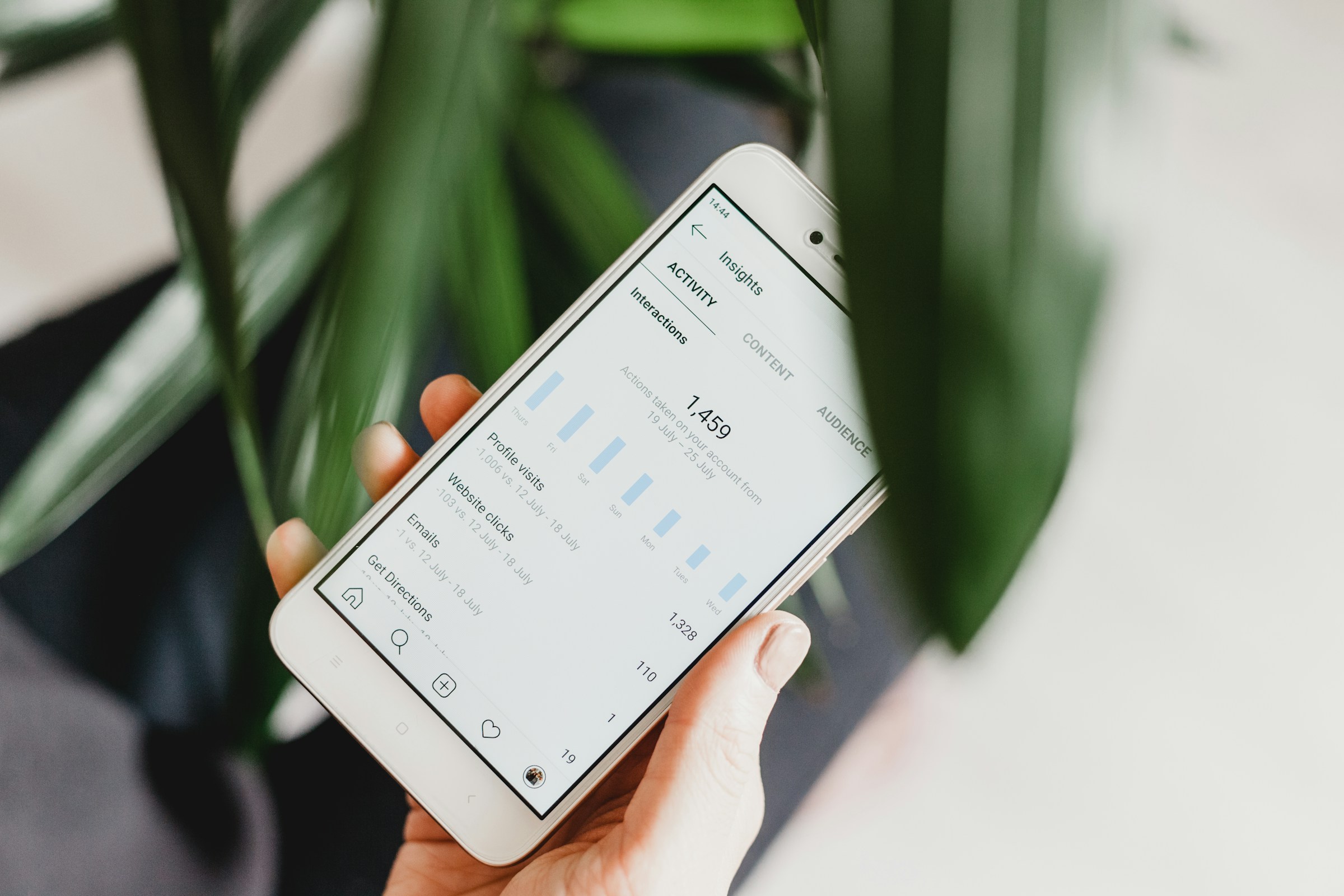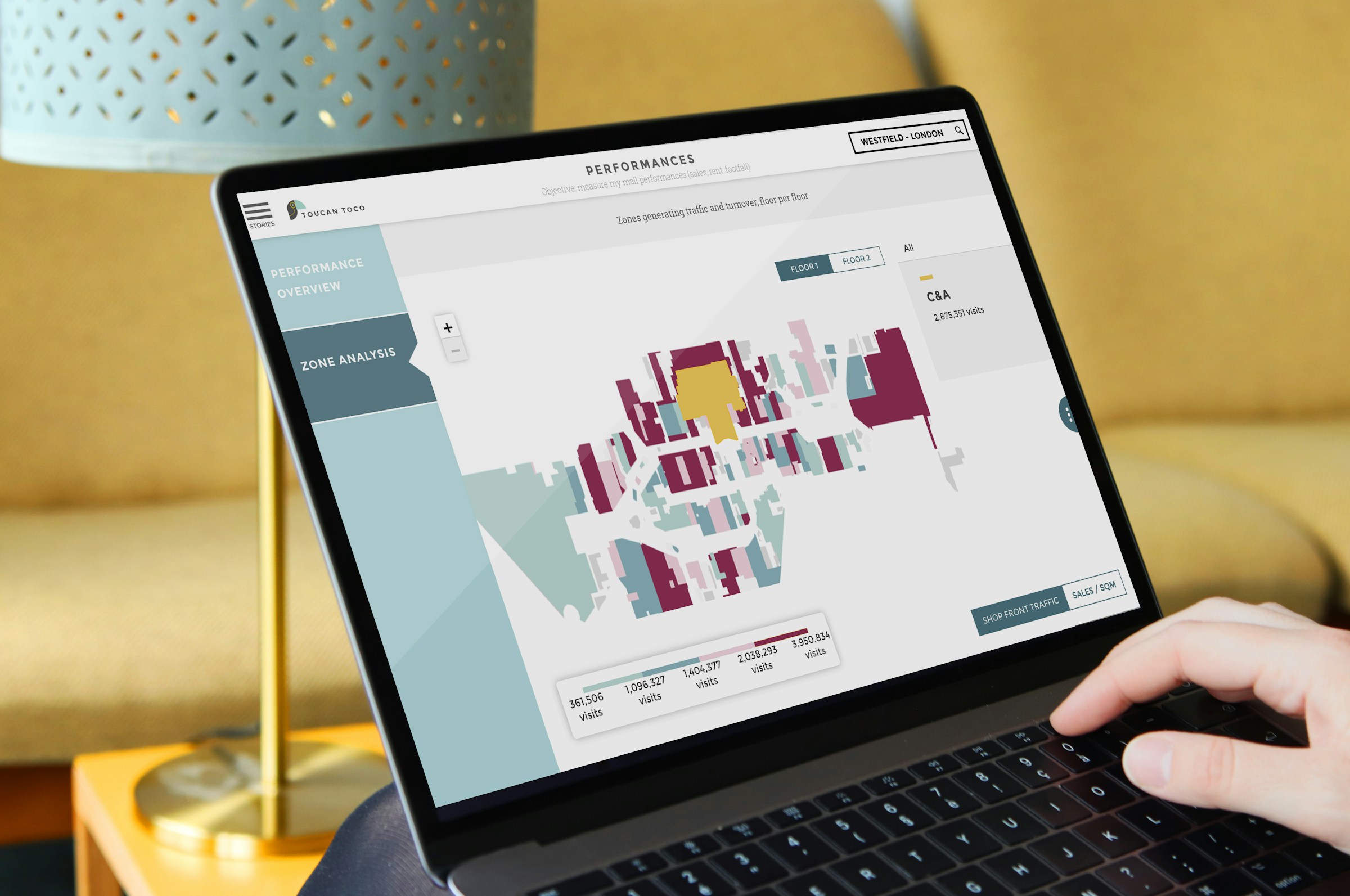Imagine effortlessly browsing products online, only to encounter issues when trying to complete the purchase in-store. Frustrating, right? Many customers face similar challenges, emphasizing the importance of a seamless Omnichannel Customer Experience. In this article, you will discover 10 omnichannel best practices to enhance customer experience, which will help you overcome these frustrating moments and deliver a quality brand experience.
Rengage’s omnichannel marketing platform provides the tools needed to help you achieve your objectives.
Table of Contents
- What is Omnichannel Customer Experience?
- Importance of Omnichannel Customer Experience
- Why Implement Omnichannel Best Practices?
- 10 Omnichannel Best Practices
- Overcoming Common Challenges in Managing Customer Experiences Across Multiple Channels
- Emerging Technologies in Omnichannel Experience
- Create Personalized Experiences That Drive Loyalty and Growth with Rengage's Omnichannel Marketing Platform
What is Omnichannel Customer Experience?

An omnichannel customer experience is a comprehensive approach to managing customer interactions across various channels to create a seamless and integrated experience. Unlike traditional multichannel strategies, which operate channels independently, omnichannel customer experience ensures that every touchpoint, whether:
- In-store
- Online
- Mobile apps
- Social media
This integration means that customer interactions are synchronized, providing a coherent and unified experience regardless of how or where the customer engages with the brand.
Centralized Data for Consistent Customer Experience
In an omnichannel strategy, all customer data, communications, and interactions are centralized, allowing for a continuous and uninterrupted experience. This approach helps in:
- Delivering consistent branding
- Messaging
- Service quality across all channels
- Ensuring that customers receive the same level of service and information regardless of their point of contact
It focuses on maintaining a consistent customer journey, where interactions are connected and aligned with the brand’s identity.
Personalized Interactions Through Data-Driven Insights
Omnichannel customer experience leverages centralized data to provide personalized interactions. This data-driven personalization enhances the relevance of interactions, making the customer feel valued and understood. By analyzing customer data from various touchpoints, businesses can tailor to suit individual preferences and behaviors for their:
- Communications
- Recommendations
- Offers
Prioritizing Customer Convenience and Satisfaction
Omnichannel customer experience prioritizes customer convenience and satisfaction. It seeks to reduce customer journey friction by ensuring smooth and effortless transitions between different channels. This approach aims to enhance overall engagement and loyalty by making interactions seamless and enjoyable.
Importance of Omnichannel Customer Experience

Consistent Customer Experience Across Channels
Customers interact with brands across various touchpoints. Omnichannel strategies ensure a seamless and consistent customer experience across these channels.
For instance, a customer might research a product online, visit a physical store to see it in person, and then complete the purchase through a mobile app. A practical omnichannel approach ensures that the customer experience remains uniform and coherent throughout these interactions. This consistency helps build trust and reliability, reinforcing the brand's commitment to delivering a high-quality experience.
Enhanced Customer Engagement and Satisfaction
Omnichannel strategies facilitate more personalized and engaging interactions with customers. By integrating data from different channels, businesses can gain a comprehensive understanding of:
- Customer preferences
- Behaviors
- Interactions
This enables the creation of tailored content and offers that resonate with individual customers. For example, if a customer frequently browses for certain products, targeted promotions or personalized recommendations based on their browsing history can be delivered through their preferred channel. This level of personalization enhances customer satisfaction by making interactions more relevant and meaningful.
Improved Customer Retention and Loyalty
An effective omnichannel strategy fosters greater customer loyalty by creating a cohesive brand experience. Customers who receive consistent and personalized interactions are more likely to develop a positive perception of the brand and remain loyal. The convenience of interacting with a brand through multiple channels also increases the likelihood of repeat business.
For example, customers with a positive experience with a brand's customer service through social media are more inclined to continue engaging with that brand across other channels. This strengthened loyalty is crucial in retaining customers in a competitive market.
Increased Sales and Revenue Opportunities
Omnichannel strategies open up multiple sales channels, creating opportunities for increased revenue. Businesses can capture sales from different touchpoints by providing customers with various ways to purchase products or services—whether online, in-store, or through mobile apps.
Integrating channels allows for upselling and cross-selling opportunities. For instance, customers who purchase a product online may receive recommendations for complementary items when they visit the physical store. This integrated approach to sales can lead to higher average order values and increased overall revenue.
Greater Insight into Customer Behavior
An omnichannel approach provides valuable insights into customer behavior and preferences. Businesses can gain a holistic view of customer interactions and trends by analyzing data from different channels. This data can be used to:
- Identify patterns
- Understand customer needs
- Make informed decisions about marketing strategies, product offerings, and customer service improvements
For example, businesses can track which channels generate the most engagement or identify common customer pain points, allowing them to refine their strategies accordingly.
Enhanced Operational Efficiency
Implementing an omnichannel strategy can streamline operations by integrating systems and processes across channels. This integration facilitates the following:
- Better inventory management
- Order fulfillment
- Customer service
For example, a unified inventory system ensures that stock levels are accurately reflected across all channels, reducing the risk of overselling or stockouts. Centralized customer service platforms allow for efficient handling of inquiries and issues, regardless of the channel through which they were received. This operational efficiency leads to smoother processes and improved service delivery.
Competitive Advantage in the Market
A well-executed omnichannel strategy in a customer-centric market can provide a significant competitive advantage. Brands that offer an integrated customer experience stand out from competitors who may still operate with fragmented or siloed channels. Customers increasingly expect brands to provide a consistent and personalized experience across all touchpoints.
By meeting and exceeding these expectations, businesses can differentiate themselves and build a stronger market position. An effective omnichannel strategy positions a brand as forward-thinking and responsive to customer needs.
Adaptability to Market Changes
The digital landscape constantly evolves, with new technologies and channels emerging regularly. An omnichannel strategy equips businesses with the flexibility to adapt to these changes. By maintaining an integrated approach, businesses can more easily incorporate new channels or technologies into their operations.
For example, the rise of social commerce or new messaging platforms can seamlessly integrate into an omnichannel strategy, ensuring that the brand remains relevant and accessible to customers. This adaptability is crucial for staying competitive and meeting the evolving expectations of consumers.
Why Implement Omnichannel Best Practices?

Enhanced Customer Satisfaction
Complying with best practices ensures that businesses deliver customers a consistent and high-quality experience. Companies can meet and often exceed customer expectations by following established guidelines and standards. This consistency is crucial for building trust and ensuring that every interaction is handled with professionalism and efficiency, whether it's a:
- Purchase
- Customer service inquiry
- Feedback submission
High customer satisfaction is often a direct result of following best practices, leading to positive experiences that enhance overall customer brand perception.
Increased Customer Loyalty
Best practices play a significant role in fostering customer loyalty. Customers consistently receiving positive experiences and high-quality service are more likely to remain loyal to the brand. This loyalty translates into repeat business, as satisfied customers are more inclined to return for future purchases.
Loyal customers are likelier to recommend the brand to others, creating organic growth through word-of-mouth. Implementing best practices helps establish a reliable reputation, which is key to building long-term customer relationships.
Improved Operational Efficiency
Adopting best practices can streamline operations and improve overall efficiency within an organization. Standardized procedures and workflows reduce the likelihood of errors and inconsistencies, allowing teams to perform tasks more effectively and efficiently.
Businesses can reduce operational costs and improve productivity by optimizing processes and eliminating redundancies. Efficient operations benefit the business's internal functioning and enhance the customer experience by ensuring timely and accurate service delivery.
Enhanced Brand Reputation
Following best practices contributes to a positive brand reputation. Organizations that adhere to industry standards and deliver high-quality experiences are perceived as reliable and trustworthy. This positive perception is essential for differentiating the brand in a competitive market.
A strong reputation enhances brand credibility, attracting new customers and retaining existing ones. By consistently applying best practices, businesses build a reputation for excellence that distinguishes them from competitors.
Reduced Risk of Compliance Issues
Many best practices are designed to ensure compliance with industry regulations and standards. Adhering to these practices helps businesses avoid legal and regulatory issues by ensuring that they operate within the bounds of the law. Compliance reduces the risk of:
- Fines
- Legal disputes
- Damage to the company's reputation
By integrating best practices into their operations, businesses can proactively address compliance requirements and mitigate potential risks.
Better Data Management and Analysis
Implementing best practices often involves using standardized tools and methodologies for data management and analysis. Effective data management practices ensure that information is accurate, secure, and readily accessible. This allows businesses to analyze data more effectively, gaining valuable insights into:
- Customer behavior
- Market trends
- Operational performance
Better data analysis supports informed decision-making, enabling businesses to make strategic adjustments and improvements based on real-time information.
Increased Employee Satisfaction and Engagement
Best practices not only benefit customers but also positively impact employees. Standardized procedures and clear guidelines give employees a structured framework to perform their tasks, reducing confusion and enhancing job satisfaction.
When employees understand what is expected of them and have access to the tools and resources they need, they are more likely to feel engaged and motivated. Higher employee satisfaction leads to improved performance and a more positive workplace culture.
Sustainable Business Growth
Following best practices supports sustainable business growth by establishing a strong foundation for scalability and expansion. Consistent quality and efficient processes create a reliable framework that can be scaled as the business grows.
A solid reputation and loyal customer base contribute to long-term success and profitability. By integrating best practices into their operations, businesses can achieve steady growth while maintaining high service and performance standards.
We provide a comprehensive solution for managing and enhancing customer journeys, delivering insights and measurable outcomes with no code. We accelerate your customer journey from onboarding, activation to conversion and churn. Enabling customers to unlock revenue from their existing user.
With [Rengage]https://rengage.ai), you can get insights into your segments, run campaigns with an intuitive journey manager, and get insights to measure how your journeys impact users conversion through our Journey Moments and Journey Builder features.
- Journey Moments: insights into your micro-segments
- Journey Builder: intuitive multi-channel marketing automation
- Insights prediction and attribution.
Book a free demo to transform customer interactions into personalized experiences that drive loyalty and growth with our omnichannel marketing platform.;
10 Omnichannel Best Practices

1. Unified Customer Profile: A Holistic View of Your Customers
A unified customer profile consolidates customer data from various touchpoints into a comprehensive view. This profile includes information from interactions such as:
- Purchase history
- Website visits
- Social media engagement
- Customer service interactions
The importance of creating a unified customer profile lies in its ability to provide a holistic view of the customer, enabling businesses to understand their preferences, behaviors, and needs more accurately. This comprehensive perspective helps deliver a more personalized and effective customer experience, as businesses can tailor their strategies based on a complete understanding of each customer.
How to Implement
To create and maintain a unified customer profile, integrate data from all available touchpoints. This involves collecting data from various channels like:
- CRM systems
- Email marketing platforms
- Social media
- Customer service records
Use data integration tools and platforms to consolidate this information into a single database. Update the profile regularly with new data and ensure accuracy by validating and cleaning the data periodically. Implementing data management practices, such as data enrichment and data hygiene, is crucial to maintaining the integrity and relevance of customer profiles.
Benefits
The primary benefit of developing a unified customer profile is enhanced personalization. Businesses can tailor their marketing efforts to align with individual preferences and behaviors by having a comprehensive view of each customer. This leads to more relevant and targeted marketing campaigns, which can improve engagement and conversion rates.
A unified profile helps provide a seamless customer experience. Businesses can anticipate needs and address issues more effectively, increasing customer satisfaction and loyalty.
Consistent brand messaging refers to maintaining uniformity in communication across all channels and touchpoints. This involves ensuring that the brand's voice, tone, and key messages are the same whether a customer interacts through social media, email, advertisements, or customer service.
Consistency in messaging helps reinforce the brand's identity and values, building customer trust and recognition. It ensures that customers receive a coherent and reliable experience regardless of how they engage with the brand.
How to Implement
To achieve consistent brand messaging, start by defining your brand’s voice and tone, and create guidelines that outline how these elements should be used across different channels. Develop a style guide that includes:
- Key messaging points
- Preferred language
- Visual elements
Train your marketing, customer service, and content teams on these guidelines to ensure everyone involved in communication is aligned. Regularly review and update your messaging strategy to adapt to new trends or brand positioning changes.
Benefits
Maintaining consistent brand messaging improves brand recognition and customer trust. When customers encounter uniform messaging across various platforms, it reinforces their perception of the brand and its reliability. Consistent communication helps build a strong brand image, crucial for differentiating the brand from competitors. It also enhances the overall customer experience by providing a clear and cohesive message, leading to stronger customer loyalty and advocacy.
3. Integrate All Communication Channels
Integrating communication channels ensures that all customer interactions, regardless of the platform (e.g., email, chat, social media), are connected and coordinated. This means creating a seamless flow of information across channels so customer interactions are not fragmented.
Integration helps maintain continuity in customer communication, allowing for a more cohesive experience. For example, a customer who contacts support via social media should receive a consistent experience if they follow up via email or phone.
How to Implement
Implementing channel integration requires using integrated communication platforms or CRM systems to unify interactions from different sources.
- Choose tools that offer multi-channel support and provide a centralized dashboard for managing customer interactions.
- Ensure that data from each channel is synchronized so that customer histories and interactions are accessible from any touchpoint.
- Regularly test and monitor the integration to identify and resolve any issues, ensuring smooth and effective communication.
Benefits
Integrating communication channels streamlines interactions and reduces customer effort. Customers benefit from a more cohesive experience, as their queries and issues are handled efficiently regardless of the channel used.
This integration also improves internal efficiency, as support teams can access a complete view of customer interactions, leading to faster issue resolution and better service quality. Channel integration enhances the customer experience by providing a seamless, uninterrupted communication flow.
4. Implement Real-Time Customer Support
Real-time customer support refers to providing immediate assistance to customers interacting with the brand. This includes:
- Live chat
- Phone support
- AI-powered chatbots
Real-time support is essential for addressing issues promptly and ensuring that customers receive timely help. It improves the customer experience by reducing wait times and quickly resolving problems.
How to Implement
To implement real-time support, invest in technologies such as live chat software, AI chatbots, and customer support platforms that enable immediate interaction.
- Develop strategies for handling real-time inquiries, including setting up response protocols and training support staff on best practices.
- Ensure that real-time support tools are integrated with your CRM system so that customer interactions can be tracked and managed effectively.
- Monitor the performance of real-time support channels to identify areas for improvement and optimize response times.
Benefits
Real-time customer support leads to faster issue resolution and increased customer satisfaction.
- By addressing customer needs promptly, businesses can prevent issues from escalating and reduce frustration.
- Immediate support enhances the overall customer experience, as customers appreciate quick and efficient service.
- Real-time support can improve customer loyalty, as timely assistance builds trust and demonstrates the brand's commitment to customer care.
5. Personalize Customer Interactions
Personalization involves tailoring interactions based on individual customer data and preferences. This can include:
- Customized recommendations
- Targeted marketing messages
- Personalized responses to inquiries
Personalization enhances the relevance of interactions, making customers feel valued and understood. It leverages data to create a more engaging and individualized experience, such as:
- Purchase history
- Browsing behavior
- Demographic information
How to Implement
Collect and analyze customer data to understand their preferences and behaviors to implement personalization. Use this data to segment customers and create targeted marketing campaigns that address their needs. Personalize communication by:
- Addressing customers by name
- Offering relevant product recommendations
- Tailoring content based on their interests
Implement personalization tools and platforms that automate these processes and ensure that personalization efforts are consistent across all touchpoints.
Benefits
Personalizing customer interactions leads to enhanced engagement and loyalty. When customers receive relevant and tailored experiences, they are more likely to feel a connection with the brand, leading to increased satisfaction and repeat business.
Personalization also improves the effectiveness of marketing efforts by delivering targeted messages that resonate with customers. Personalized interactions help build stronger customer relationships and drive long-term success.
6. Utilize Omnichannel Analytics
Omnichannel analytics involves analyzing customer data across all interaction channels to understand customer behavior comprehensively. This includes tracking interactions from:
- Email
- Social media
- Website visits
- Other touchpoints
Omnichannel analytics provides insights into how customers engage with the brand across different channels, helping businesses to:
- Identify trends
- Preferences
- Areas for improvement
How to Implement
Integrate data from all customer touchpoints into a centralized analytics platform to utilize omnichannel analytics. Use tools with multi-channel tracking and reporting capabilities to gather insights from various sources.
Analyze the data to identify patterns in customer behavior, such as common pathways to conversion or frequent issues. Regularly review and update analytics strategies to reflect current customer trends and provide actionable insights for improving the customer experience.
Benefits
Omnichannel analytics provides valuable insights into customer behavior, allowing businesses to make informed decisions. By understanding how customers interact across channels, businesses can identify opportunities for improvement and optimize their strategies.
Analytics also helps measure the effectiveness of marketing campaigns and customer support efforts, enabling continuous strategy refinement. Omnichannel analytics enhances delivering a cohesive and personalized customer experience.
7. Provide Seamless Cross-Channel Experiences
Cross-channel experience refers to ensuring a smooth transition between different customer interaction channels. This means customers can seamlessly move from one channel to another, from a website to a mobile app or from social media to customer support, without losing continuity. A seamless cross-channel experience is crucial for maintaining a consistent and cohesive customer journey.
How to Implement
To provide a seamless cross-channel experience, ensure customer data and interactions are synchronized across all channels. Implement systems that allow for continuity, such as shared shopping carts or order tracking accessible from any channel.
Design your channels to integrate smoothly with consistent branding and functionality. Regularly test cross-channel interactions to identify and resolve issues that may disrupt the customer experience.
Benefits
Providing a seamless cross-channel experience increases convenience for customers, as they can interact with the brand without interruption. This continuity helps create a cohesive customer journey, enhancing overall satisfaction.
A smooth cross-channel experience reduces the likelihood of customer frustration and abandonment, leading to higher retention and loyalty. It also improves operational efficiency by streamlining processes and managing customer interactions across channels.
8. Leverage Automation for Efficiency
Automation in customer service involves using technology to perform tasks and processes with minimal human intervention. Automation enhances efficiency by reducing manual effort and speeding up processes. This includes automated responses, workflow automation, and AI-powered tools that handle routine tasks such as:
- Data entry
- Scheduling
- Customer inquiries.
How to Implement
To leverage automation, identify repetitive tasks and processes that can be streamlined using technology. Implement tools such as:
- Automated email responders
- Chatbots for handling common inquiries
- Workflow automation platforms
Ensure that automation tools are integrated with your existing systems to maintain data consistency and effectiveness. Regularly review automation processes to optimize their performance and address any issues.
Benefits
Automation improves efficiency by reducing the time and effort required to complete routine tasks.
- This allows staff to focus on more complex and value-added activities, enhancing productivity.
- Automation ensures consistency in customer interactions, as automated responses are standardized and reliable.
- It helps scale operations by handling increased volumes of tasks without additional resources, leading to cost savings and improved service quality.
9. Train Staff on Omnichannel Best Practices
Training staff on omnichannel best practices is crucial for ensuring they have the knowledge and skills to deliver a seamless customer experience. Training also helps align team members with the brand’s customer service strategies and standards. Well-trained staff can:
- Effectively manage interactions across various channels
- Maintain consistency in communication
- Utilize tools and technologies efficiently
How to Implement
To train staff on omnichannel best practices:
- Develop a comprehensive training program that covers critical concepts such as channel integration, consistent messaging, and customer data management.
- Use a combination of classroom training, online courses, and hands-on practice to ensure that employees understand and can apply the best practices.
- Provide ongoing training and support to update staff on new tools, technologies, and strategies.
Benefits
Training staff on omnichannel best practices leads to better customer service and more consistent application of strategies.
- Employees who are well-versed in omnichannel practices are likelier to deliver high-quality interactions and resolve issues effectively.
- Training helps improve staff confidence and competency, resulting in higher job satisfaction and better overall performance.
- A well-trained team contributes to a cohesive customer experience and supports the successful implementation of omnichannel strategies.
10. Continuously Evaluate and Adapt
Evaluation and adaptation involve regularly assessing the performance of omnichannel strategies and making adjustments based on data and feedback. This continuous improvement ensures that strategies remain effective and relevant in a dynamic market. Evaluation helps identify areas for enhancement, while adaptation involves implementing changes to optimize the customer experience.
How to Implement\
Establish metrics and key performance indicators (KPIs) to measure success in evaluating and adapting omnichannel strategies. Assess the effectiveness of your strategy using:
- Customer feedback
- Performance data
- Analytics tools
Review the results regularly and identify areas for improvement. Adapt strategies based on insights gained from evaluation, such as:
- Modifying processes
- Updating technologies
- Refining communication approaches
Benefits
Continuous evaluation and adaptation help businesses stay current with trends and maintain an effective customer experience. Companies can regularly assess performance to address emerging issues, optimize strategies, and respond to changing customer needs.
This ongoing improvement process leads to better customer satisfaction, enhanced loyalty, and a competitive edge in the market. Adapting to new developments and feedback ensures that the business remains agile and responsive to customer expectations.
Overcoming Common Challenges in Managing Customer Experiences Across Multiple Channels

Unified Customer Profile
One critical challenge in managing omnichannel customer experiences is dealing with fragmented data. When customer information is scattered across various touchpoints, businesses may struggle to provide consistent and personalized experiences. To address this issue, developing a unified customer profile is essential. By consolidating data from different channels into a comprehensive view, businesses can ensure that every interaction is based on accurate and up-to-date information.
This practice enables businesses to offer more coherent and personalized experiences and ensures consistent support and recommendations across different channels. Businesses can successfully navigate the complexities of omnichannel marketing by understanding:
- Customer’s history
- Preferences
- Behaviors
Consistent Brand Messaging
Inconsistent brand messaging can create confusion and reduce trust among customers engaging across multiple channels. To counteract this challenge, businesses must maintain uniformity in communication across all touchpoints. By establishing clear guidelines for brand voice, tone, and critical messages, businesses can deliver a cohesive experience regardless of the interaction point.
This consistency reinforces the brand’s identity and values, bolstering customer trust and recognition. A consistent message cultivates customer satisfaction and loyalty, as customers are more likely to have a positive experience when they receive a coherent message, ensuring that the brand’s voice remains vibrant.
Integration of Communication Channels
Disjointed customer experiences often occur when interactions across various channels operate independently. Integrating communication channels is crucial to mitigate this challenge. By utilizing tools and platforms that unify interactions from email, chat, social media, and other sources, businesses can provide a seamless omnichannel experience.
For instance, if a customer initiates a conversation on social media and later contacts support via email, the support team can access previous interactions, thus offering a more informed response. By maintaining continuity across channels, businesses can reduce customer effort and enhance the overall customer experience, making navigating the complexities of omnichannel marketing easier.
Real-Time Customer Support
Providing timely assistance is imperative in managing customer experiences effectively. Delays in response times can lead to customer frustration and dissatisfaction. To tackle this challenge, implementing real-time customer support, such as live chat and AI-powered chatbots, can be highly beneficial.
Real-time support allows customers to receive immediate assistance and resolve their issues promptly. By offering instant responses, businesses can prevent issues from escalating and improve overall satisfaction. Real-time support enhances the customer experience by ensuring that help is available when needed, contributing to faster resolution and higher customer satisfaction.
Personalized Customer Interactions
Generic interactions can result in customer disengagement as customers may feel their specific needs and preferences are not considered. Personalizing customer interactions based on individual data and preferences is essential to tackle this challenge. Businesses can create more relevant and engaging interactions by using customer data to offer:
- Customized recommendations
- Targeted messages
- Personalized responses
Personalization helps address customers' unique needs and interests, making them feel valued and understood. By providing a more individualized experience, businesses can enhance customer engagement and loyalty, effectively navigating the complexities of omnichannel marketing.
Emerging Technologies in Omnichannel Experience

The Rise of AI and Machine Learning
Artificial intelligence (AI) and machine learning transform how businesses approach omnichannel customer experience. These technologies allow organizations to gain deeper insights into customer behavior, preferences, and pain points across multiple touchpoints. By analyzing vast amounts of data, AI algorithms can identify patterns, predict future actions, and personalize interactions in real-time.
One of the most significant applications of AI in omnichannel is using chatbots and virtual assistants for customer support. These AI-powered tools can:
- Handle various inquiries, from simple FAQs to complex troubleshooting
- Provide immediate customer assistance 24/7
As chatbots interact with more customers, they continuously learn and improve their responses, enhancing the overall customer experience.
Personalization at Scale
AI and machine learning enable businesses to personalize customer experiences at scale. Organizations can create highly targeted and relevant content, offers, and recommendations by leveraging customer data from multiple channels. Personalization can occur at various customer journey stages, from product recommendations on e-commerce websites to tailored email campaigns and in-store experiences.
For example, retailers can use machine learning algorithms to analyze:
- Customer browsing and purchase history
- Demographics
- Location data
This level of personalization increases the likelihood of conversions and fosters a sense of loyalty and trust between the customer and the brand.
Predictive Analytics for Proactive Engagement
Businesses can use AI and machine learning to employ predictive analytics to proactively anticipate customer needs and engage with them. By analyzing historical data and real-time interactions, organizations can identify potential issues or opportunities before they occur. This allows them to proactively address customer concerns or capitalize on opportunities for cross-selling and upselling.
For instance, an AI-powered chatbot can proactively offer assistance or suggest related items if a customer is browsing a website and appears to be struggling with a particular product. This proactive approach enhances the customer experience and demonstrates the brand's commitment to providing exceptional service.
Omnichannel Optimization through Machine Learning
Machine learning algorithms can optimize omnichannel strategies by identifying areas for improvement and testing new approaches. By analyzing customer interactions across various channels, businesses can:
- Identify bottlenecks
- Pinpoint areas of friction
- Make data-driven decisions
For example, machine learning can help organizations determine the most effective channels for customer engagement, the optimal timing and frequency of communications, and the most compelling content and offers. This information can then be used to:
- Refine marketing campaigns
- Optimize website design
- Improve customer service processes.
Augmented Reality and Virtual Reality
Augmented reality (AR) and virtual reality (VR) also transform omnichannel customer experience. These technologies enable customers to interact with products and services in new and engaging ways, blurring the lines between physical and digital experiences.
In the retail sector, AR is being used to allow customers to try on clothing, accessories, and makeup virtually before making a purchase. This reduces the likelihood of returns and enhances the overall shopping experience.
- VR is being used in real estate and automotive industries to provide immersive virtual tours of properties and vehicles, enabling customers to make more informed decisions.
The Internet of Things (IoT) and Connected Devices
The Internet of Things (IoT) and connected devices are shaping the future of omnichannel customer experience. As more devices connect to the internet, businesses can gather valuable data on customer behavior and preferences, enabling them to provide more personalized and seamless experiences.
- Smart home devices can provide insights into customer preferences for temperature, lighting, and entertainment, allowing businesses to tailor their offerings accordingly.
- Wearable devices can provide data on customer activity levels, sleep patterns, and health metrics, enabling businesses in the healthcare and fitness industries to provide more targeted and effective services.
Social Media and User-Generated Content
Social media platforms have become an integral part of the omnichannel customer experience. Customers increasingly turn to social media to engage with brands, share their experiences, and seek recommendations from their peers. User-generated content can significantly impact customer decision-making and brand reputation, such as:
- Reviews
- Ratings
- Social media posts
Businesses that embrace social media as part of their omnichannel strategy can benefit from increased brand awareness, improved customer engagement, and valuable insights into customer preferences and pain points. By actively monitoring and responding to customer feedback on social media, organizations can demonstrate their commitment to customer service and build stronger relationships with their target audience.
Are you looking to enhance your customer journey, boost conversion rates, and reduce churn without the need for complex coding? Rengage, is a comprehensive solution designed to revolutionize your customer interactions. With Rengage, you can transform every touchpoint into a personalized experience that drives loyalty and growth.
Rengage: Redefining Customer Journeys
Rengage offers a seamless solution for managing and enhancing customer journeys. Rengage enables businesses to accelerate their customer journey from onboarding to churn by providing insightful data and measurable outcomes using a no-code approach. With Rengage, you can unlock revenue from existing users by:
- Gaining insights into your segments
- Running campaigns using an intuitive journey manager
- Measuring the impact of your campaigns on user conversion through features like journey moments and journey builder.
Journey Moments: Unlocking Micro-Segments
Rengage's journey moments feature provides insights into micro-segments of your customer base. By understanding these segments better, you can tailor your marketing efforts to meet their needs and preferences. This detailed level of personalization can significantly impact customer engagement and retention rates, ultimately boosting your bottom line.
Journey Builder: Streamlining Marketing Automation
Rengage's journey builder is an intuitive multi-channel marketing automation tool that simplifies creating and executing marketing campaigns. Offering a user-friendly interface and robust functionality, it empowers businesses to deliver personalized messages across various channels, ensuring a consistent brand experience for customers.
Insights, Predictions, and Attribution
With Rengage, you can access valuable insights that can guide your decision-making process. By leveraging predictive analytics, you can anticipate customer behavior and preferences, enabling you to address their needs proactively. Rengage provides detailed attribution reports that help you understand which touchpoints drive conversions, allowing you to optimize your marketing strategy for maximum impact.
Book Your Free Demo Today!
Ready to transform your customer interactions and drive loyalty and growth with Rengage? Book a free demo today to see how our omnichannel marketing platform can revolutionize your approach to customer engagement. Take the first step towards unlocking the full potential of your customer journeys with Rengage.

















